#Understanding the value of DOIs
Explore tagged Tumblr posts
Text

Understanding the value of DOIs, we at Host-A-Journal are committed to providing a comprehensive solution that removes financial barriers for our journal partners. Enjoy our complimentary DOI minting and registration services for all hosted journals. #DOIValue #ComprehensiveSolution
#Understanding the value of DOIs#we at Host-A-Journal are committed to providing a comprehensive solution that removes financial barriers for our journal partners. Enjoy ou#DOIValue#ComprehensiveSolution
0 notes
Text
Humans are not perfectly vigilant

I'm on tour with my new, nationally bestselling novel The Bezzle! Catch me in BOSTON with Randall "XKCD" Munroe (Apr 11), then PROVIDENCE (Apr 12), and beyond!

Here's a fun AI story: a security researcher noticed that large companies' AI-authored source-code repeatedly referenced a nonexistent library (an AI "hallucination"), so he created a (defanged) malicious library with that name and uploaded it, and thousands of developers automatically downloaded and incorporated it as they compiled the code:
https://www.theregister.com/2024/03/28/ai_bots_hallucinate_software_packages/
These "hallucinations" are a stubbornly persistent feature of large language models, because these models only give the illusion of understanding; in reality, they are just sophisticated forms of autocomplete, drawing on huge databases to make shrewd (but reliably fallible) guesses about which word comes next:
https://dl.acm.org/doi/10.1145/3442188.3445922
Guessing the next word without understanding the meaning of the resulting sentence makes unsupervised LLMs unsuitable for high-stakes tasks. The whole AI bubble is based on convincing investors that one or more of the following is true:
There are low-stakes, high-value tasks that will recoup the massive costs of AI training and operation;
There are high-stakes, high-value tasks that can be made cheaper by adding an AI to a human operator;
Adding more training data to an AI will make it stop hallucinating, so that it can take over high-stakes, high-value tasks without a "human in the loop."
These are dubious propositions. There's a universe of low-stakes, low-value tasks – political disinformation, spam, fraud, academic cheating, nonconsensual porn, dialog for video-game NPCs – but none of them seem likely to generate enough revenue for AI companies to justify the billions spent on models, nor the trillions in valuation attributed to AI companies:
https://locusmag.com/2023/12/commentary-cory-doctorow-what-kind-of-bubble-is-ai/
The proposition that increasing training data will decrease hallucinations is hotly contested among AI practitioners. I confess that I don't know enough about AI to evaluate opposing sides' claims, but even if you stipulate that adding lots of human-generated training data will make the software a better guesser, there's a serious problem. All those low-value, low-stakes applications are flooding the internet with botshit. After all, the one thing AI is unarguably very good at is producing bullshit at scale. As the web becomes an anaerobic lagoon for botshit, the quantum of human-generated "content" in any internet core sample is dwindling to homeopathic levels:
https://pluralistic.net/2024/03/14/inhuman-centipede/#enshittibottification
This means that adding another order of magnitude more training data to AI won't just add massive computational expense – the data will be many orders of magnitude more expensive to acquire, even without factoring in the additional liability arising from new legal theories about scraping:
https://pluralistic.net/2023/09/17/how-to-think-about-scraping/
That leaves us with "humans in the loop" – the idea that an AI's business model is selling software to businesses that will pair it with human operators who will closely scrutinize the code's guesses. There's a version of this that sounds plausible – the one in which the human operator is in charge, and the AI acts as an eternally vigilant "sanity check" on the human's activities.
For example, my car has a system that notices when I activate my blinker while there's another car in my blind-spot. I'm pretty consistent about checking my blind spot, but I'm also a fallible human and there've been a couple times where the alert saved me from making a potentially dangerous maneuver. As disciplined as I am, I'm also sometimes forgetful about turning off lights, or waking up in time for work, or remembering someone's phone number (or birthday). I like having an automated system that does the robotically perfect trick of never forgetting something important.
There's a name for this in automation circles: a "centaur." I'm the human head, and I've fused with a powerful robot body that supports me, doing things that humans are innately bad at.
That's the good kind of automation, and we all benefit from it. But it only takes a small twist to turn this good automation into a nightmare. I'm speaking here of the reverse-centaur: automation in which the computer is in charge, bossing a human around so it can get its job done. Think of Amazon warehouse workers, who wear haptic bracelets and are continuously observed by AI cameras as autonomous shelves shuttle in front of them and demand that they pick and pack items at a pace that destroys their bodies and drives them mad:
https://pluralistic.net/2022/04/17/revenge-of-the-chickenized-reverse-centaurs/
Automation centaurs are great: they relieve humans of drudgework and let them focus on the creative and satisfying parts of their jobs. That's how AI-assisted coding is pitched: rather than looking up tricky syntax and other tedious programming tasks, an AI "co-pilot" is billed as freeing up its human "pilot" to focus on the creative puzzle-solving that makes coding so satisfying.
But an hallucinating AI is a terrible co-pilot. It's just good enough to get the job done much of the time, but it also sneakily inserts booby-traps that are statistically guaranteed to look as plausible as the good code (that's what a next-word-guessing program does: guesses the statistically most likely word).
This turns AI-"assisted" coders into reverse centaurs. The AI can churn out code at superhuman speed, and you, the human in the loop, must maintain perfect vigilance and attention as you review that code, spotting the cleverly disguised hooks for malicious code that the AI can't be prevented from inserting into its code. As "Lena" writes, "code review [is] difficult relative to writing new code":
https://twitter.com/qntm/status/1773779967521780169
Why is that? "Passively reading someone else's code just doesn't engage my brain in the same way. It's harder to do properly":
https://twitter.com/qntm/status/1773780355708764665
There's a name for this phenomenon: "automation blindness." Humans are just not equipped for eternal vigilance. We get good at spotting patterns that occur frequently – so good that we miss the anomalies. That's why TSA agents are so good at spotting harmless shampoo bottles on X-rays, even as they miss nearly every gun and bomb that a red team smuggles through their checkpoints:
https://pluralistic.net/2023/08/23/automation-blindness/#humans-in-the-loop
"Lena"'s thread points out that this is as true for AI-assisted driving as it is for AI-assisted coding: "self-driving cars replace the experience of driving with the experience of being a driving instructor":
https://twitter.com/qntm/status/1773841546753831283
In other words, they turn you into a reverse-centaur. Whereas my blind-spot double-checking robot allows me to make maneuvers at human speed and points out the things I've missed, a "supervised" self-driving car makes maneuvers at a computer's frantic pace, and demands that its human supervisor tirelessly and perfectly assesses each of those maneuvers. No wonder Cruise's murderous "self-driving" taxis replaced each low-waged driver with 1.5 high-waged technical robot supervisors:
https://pluralistic.net/2024/01/11/robots-stole-my-jerb/#computer-says-no
AI radiology programs are said to be able to spot cancerous masses that human radiologists miss. A centaur-based AI-assisted radiology program would keep the same number of radiologists in the field, but they would get less done: every time they assessed an X-ray, the AI would give them a second opinion. If the human and the AI disagreed, the human would go back and re-assess the X-ray. We'd get better radiology, at a higher price (the price of the AI software, plus the additional hours the radiologist would work).
But back to making the AI bubble pay off: for AI to pay off, the human in the loop has to reduce the costs of the business buying an AI. No one who invests in an AI company believes that their returns will come from business customers to agree to increase their costs. The AI can't do your job, but the AI salesman can convince your boss to fire you and replace you with an AI anyway – that pitch is the most successful form of AI disinformation in the world.
An AI that "hallucinates" bad advice to fliers can't replace human customer service reps, but airlines are firing reps and replacing them with chatbots:
https://www.bbc.com/travel/article/20240222-air-canada-chatbot-misinformation-what-travellers-should-know
An AI that "hallucinates" bad legal advice to New Yorkers can't replace city services, but Mayor Adams still tells New Yorkers to get their legal advice from his chatbots:
https://arstechnica.com/ai/2024/03/nycs-government-chatbot-is-lying-about-city-laws-and-regulations/
The only reason bosses want to buy robots is to fire humans and lower their costs. That's why "AI art" is such a pisser. There are plenty of harmless ways to automate art production with software – everything from a "healing brush" in Photoshop to deepfake tools that let a video-editor alter the eye-lines of all the extras in a scene to shift the focus. A graphic novelist who models a room in The Sims and then moves the camera around to get traceable geometry for different angles is a centaur – they are genuinely offloading some finicky drudgework onto a robot that is perfectly attentive and vigilant.
But the pitch from "AI art" companies is "fire your graphic artists and replace them with botshit." They're pitching a world where the robots get to do all the creative stuff (badly) and humans have to work at robotic pace, with robotic vigilance, in order to catch the mistakes that the robots make at superhuman speed.
Reverse centaurism is brutal. That's not news: Charlie Chaplin documented the problems of reverse centaurs nearly 100 years ago:
https://en.wikipedia.org/wiki/Modern_Times_(film)
As ever, the problem with a gadget isn't what it does: it's who it does it for and who it does it to. There are plenty of benefits from being a centaur – lots of ways that automation can help workers. But the only path to AI profitability lies in reverse centaurs, automation that turns the human in the loop into the crumple-zone for a robot:
https://estsjournal.org/index.php/ests/article/view/260

If you'd like an essay-formatted version of this post to read or share, here's a link to it on pluralistic.net, my surveillance-free, ad-free, tracker-free blog:
https://pluralistic.net/2024/04/01/human-in-the-loop/#monkey-in-the-middle

Image: Cryteria (modified) https://commons.wikimedia.org/wiki/File:HAL9000.svg
CC BY 3.0 https://creativecommons.org/licenses/by/3.0/deed.en
--
Jorge Royan (modified) https://commons.wikimedia.org/wiki/File:Munich_-_Two_boys_playing_in_a_park_-_7328.jpg
CC BY-SA 3.0 https://creativecommons.org/licenses/by-sa/3.0/deed.en
--
Noah Wulf (modified) https://commons.m.wikimedia.org/wiki/File:Thunderbirds_at_Attention_Next_to_Thunderbird_1_-_Aviation_Nation_2019.jpg
CC BY-SA 4.0 https://creativecommons.org/licenses/by-sa/4.0/deed.en
#pluralistic#ai#supervised ai#humans in the loop#coding assistance#ai art#fully automated luxury communism#labor
379 notes
·
View notes
Note
Boba hijueputa, como si ser amable y tierna con los manes te hiciera vender mucho, fracasada, boba, con los manes toca ser sumisa y una perra o si no no te compran ni chimba, los manes son unos hps deje de ser tan ridícula, ojalá le cierren ese esponsor por boba.
Hola. Se nota que también eres una chica que crea contenido, y lamento sinceramente que tengas esa percepción tan dura sobre los hombres y sobre cómo funciona este mundo. No todos son así.
Además, este blog no lo tengo con el objetivo de vender contenido. Aquí es donde soy yo misma, donde me siento libre de compartir cosas que me gustan, reírme con mi comunidad y tener conversaciones bonitas y profundas. Si me apoyan o no, eso no define lo que hago aquí ni el valor que le doy a estos espacios.
En algo tienes razón: quizás lo explícito y el rol sumiso venden más. Pero decidí no enfocarme en eso. No porque esté mal, sino porque simplemente no es lo que quiero expresar.
Gracias por tu mensaje, en serio. Me encantaría poder hablar más contigo, entender de dónde nace este rechazo hacia mí. Si alguna vez te animas a escribir por privado, estaré abierta a escucharte. Un abracito muy grande, baby. 🌷
English: Boba hijueputa, as if being kind and tender with men made you sell a lot, failed, silly, with men you have to be submissive and a bitch or else they won't buy anything from you, men are fools, stop being so ridiculous, I hope they close that sponsor for being stupid.
Hi.
I can tell you're also a girl who creates content, and I'm sincerely sorry you have such a harsh perception about men and how this world works. Not all of them are like that.
Also, I don't have this blog for the purpose of selling content. This is where I am myself, where I feel free to share things I love, laugh with my community, and have nice, deep conversations. If they support me or not, that doesn't define what I do here nor the value I give to these spaces.
You're right about one thing: maybe explicit and submissive roles sell more. But I decided not to focus on that. Not because it's wrong, but because it's simply not what I want to express.
Thanks for your message, seriously. I would love to be able to talk more with you, to understand where this rejection of me comes from. If you ever feel like writing privately, I'd be open to listen to you.
A very big hug, baby. 🌷
#ask#pregunta#preguntas#monicacitrus#monicalestrange#colombia#colombiana#colombian marin kitagawa#colombian#marin kitagawa#ask blog#ask me anything#ask box#anon ask#send asks#anons#answered#answered asks#ask me things#ask me stuff
24 notes
·
View notes
Text

Laser ultrasound used to reveal the elasticity of space rock for the first time
Scientists and engineers at the University of Nottingham have measured the stiffness of space rock for the first time. Many meteorites are made of crystalline materials, formed under exotic conditions that cannot be replicated on Earth. The stiffness of the crystals that make up these materials has historically been difficult to measure and normally this requires scientists to grow a special single crystal, which in this case is not possible.
Published in Scripta Materialia, using a new technique developed and patented at the University of Nottingham, experts have measured this important property for the first time.
Lead author of the study, Wenqi Li, from the university's Optics and Photonics research group, said, "These materials have evolved in unique conditions over millions of years to form these amazing structures and patterns.
"These conditions cannot be reproduced on Earth and meteorites have amazing large-scale microstructure and phase mixtures which give mechanical and elastic properties that are quite different to the man-made iron-nickel alloys we can produce on Earth."
Meteorites provide access to information on the formation and evolution of planetary bodies which is otherwise difficult to study. The unique nature of these samples and their relative scarcity means that non-destructive analysis techniques are needed to study their properties. Understanding their properties develops the understanding of the formation of the solar system and the planets.
Studying these samples can also help develop an understanding of alloys used for aerospace and industrial applications, suitable for constructing extraterrestrial structures, making meteors a suitable source of material for future manufacturing in space.
This study uses the laser ultrasound technique spatially resolved acoustic spectroscopy (SRAS++), which was invented at the University of Nottingham, to measure the properties of the Gibeon meteorite.
Associate Professor Richard Smith explained, "The SRAS++ machine uses lasers to make and detect acoustic waves that travel on the surface of the material. This means that we do not need to touch the sample and do not damage the sample in any way. This is really important for samples where there is limited supply.
"There are no published values to directly compare the results of this study, as non-destructive measurements of the single crystal elasticity on granular material has not previously been possible.
"So, we compared our results with theoretical values for man-made iron-nickel alloys. We also calculated the bulk properties from our single crystal elasticity measurements and compared them to published measurements on the Gibeon meteorite and they also agree well."
Professor Matt Clark, Faculty of Engineering, says, "We're incredibly excited to gain access to larger pieces of these precious samples in the future so we can use the SRAS++ method to image the changes in the local elastic properties from the center to the periphery of the meteorites to understand the formation of these complicated materials."
TOP IMAGE: Graphical abstract. Credit: Scripta Materialia (2025). DOI: 10.1016/j.scriptamat.2025.116666
8 notes
·
View notes
Text
Towards a theory of linguistic curiosity: applying linguistic frameworks to lingcomm and scicomm - New Open Access research article in Linguistics Vanguard
The latest Special Issue of Linguistics Vanguard is all about Public Outreach in Linguistics, and includes articles from some of my favourite lingcommers and about some of my favourite projects. There are articles from Planet Word and the Linguistics Roadshow team, as well as podcasting, courtrooms and high school clubs.
As the editors of this special issue, Laura Wagner and Georgia Zellou, note in their introduction to the collection:
[P]ublic engagement in the domain of language does not (currently!) have a well-established presence in society; compare it, for example, to the range of high-profile engagement activities to be found in Astronomy. Some of the reasons for this lack are institutional – most academic researchers don’t get credit for engagement work the way they do for writing traditional research papers. But the field also lacks an engagement infrastructure: we have few ways of learning about who is doing it, what’s been found to be effective, and connections for building engagement collaborations.
It's exciting to see lingcomm practitioners begin to articulate the work that goes into what they produce, and to build a shared understanding of the value of lingcomm.
As part of this collection of articles, I'm delighted that I am coauthor on a paper with Gretchen McCulloch on the value of 'curiosity' as a linguistic value that can be observed and analysed. This is a theory Gretchen has been working on for a while, and I'm delighted that she invited me along to turn this into an article we can share. It captures the expansive approach to the value of linguistic theory to the production of lingcomm content, and the ways that lingcomm can benefit from studying excellent scicomm in other domains.
Abstract
Linguistics communication (lingcomm) is uniquely placed as a branch of science communication (scicomm), as lingcomm practitioners can reflexively draw on our own discipline of linguistics to further our understanding of effective communication practices with broader audiences. In this article we cut across various sub-disciplines of linguistics to look at syntactic, semantic, and discourse practices that make for compelling communication. We refer to this as the way a text incites curiosity, or the value of “curiosity”, by analogy with “grammaticality” and “felicity” as linguistic concepts. We look at an example text with high curiosity in scicomm, before highlighting key linguistic features of curiosity. We also show how we implement these in our own lingcomm work, and discuss the implications for effective lingcomm. We conclude with potential avenues for exploring curiosity in scicomm and lingcomm, and the importance of linguists contributing to public understanding of language.
Reference
McCulloch, G. & L. Gawne. 2024. Towards a theory of linguistic curiosity: applying linguistic frameworks to lingcomm and scicomm. Linguistics Vanguard 10(s3): 181-189. DOI: 10.1515/lingvan-2024-0073
#linguistics#language#lingcomm#publication#research#lingthusiasm#podcast#scicomm#curiosity#open access
17 notes
·
View notes
Text
More primary and secondary sources
Hi everyone,
I already introduced you my subject during the last few weeks but today I'll try to be complementary.
Reminder : How Ariana Grande's songs represents her commitment to mental health?
Pop music is generally considered to be the most ‘vanilla’ of musical genres, light-hearted, superficial and created for mass consumption but Ariana Grande's songs prove these stereotypes wrong.
Ariana Grande uses her music as a way to express her struggles and experiences related to mental health. In several of her songs, she addresses themes such as anxiety, depression, and loss, allowing her to share her emotions and connect with her fans on topics that affect many people.
By exposing her own emotions to the public, she gives hope to millions of her fans who suffer the same symptoms of anxiety.
Indeed, Ariana's songs can help people express their values, aspirations, beliefs, and views on the world. It can also help her fans to have a better understanding of their thoughts and feelings.
Her lyrical work about confidence and acceptation may encourage them to seek for help and support.
Indeed in a podacst where she talks about the begining of her carreer and her mental health journey she mentioned that therapy should be mandatory for all child actors.
By openly discussing her mental health through her music, podcasts, interviews... Ariana Grande helps to reduce the stigma surrounding these issues and encourages her fans to be honest about their own struggles. This creates a space where people can feel understood and less alone in their experiences.
Thanks for reading me !
Links to additional sources:
• Articles:
https://journals.sagepub.com/doi/abs/10.1080/10398560701879589
https://www.cambridge.org/core/journals/the-british-journal-of-psychiatry/article/psychiatry-and-pop-culture-millennials-for-mental-health-psychiatry-in-music/87AA22AE9F9C3241DA36899CB63CD1A8
https://www.frontiersin.org/articles/10.3389/fpsyg.2022.824789/full
• Documentary:
https://tv.apple.com/us/show/worlds-collide-the-manchester-bombing/umc.cmc.5bpe25r1dma8sxrncvhq7en7l
• Podcasts:
https://open.spotify.com/episode/4z5kjqPvdOCki8Fpbakrtw?si=xtZ2yiRTSfyLwBkJGkC3ug
https://open.spotify.com/episode/3MBsTJNXDuxfVeNUkkLZUT?si=eLe5Hxp0R1S0UpvPzpP0xQ
10 notes
·
View notes
Text
My journey with trash is an indecipherable clock. I cannot remember when I became so entranced by it. The intricacies must have been easier to navigate when I was a child. When did my simple joy of collecting turn into art? Or was it always art? My self-affirmed artistic role as a Sentient Steward towards dead and unfeeling Things is unclear; I cannot quite figure out what I am to my collections. I attempt at being a butler of sorts, who tries to make their presence secondary to The Thing being displayed, but this position never feels right. How does turning a Thing that has been abandoned, and lived outside of capital-linear time change when it is made back into an Object? Do I give myself some grace; forgive my inability to understand The Object due to my anthropocentric perspective? How do you keep a Thing – queer – in the sense that it is still out of reach from value, perception, and heterogenous ideologies of what it should be when it has been reintroduced to the human hand?10 I want to watch Things continue queering everything around them, to make things strange when everything begins to settle back down to normalcy.
10 Oxford English Dictionary, s.v. “queer (adj.1), sense 1.a,” December 2024, https://0-doi
org.catalogue.libraries.london.ac.uk/10.1093/OED/1082843456, (Accessed 13/01/2025).
3 notes
·
View notes
Text
Eating Other Animals is Finally Recognized as a Mental Illness
Humans are herbivorous primates, not flesh eating lions. We have a natural empathy towards other species of animals, not a blood lust to instantly kill them. But we have inherited a deeply unnatural and unhealthy habit of eating other animals, 99% of which are raised in horrific conditions on factory farms.
This conflict between our natural empathy toward other species and yet eating animals who have been terribly abused is commonly known as "the meat paradox". Psychology has coined a more formal description, "meat-related cognitive dissonance" or MRCD.
"As the practice of eating animals as meat faces increased scrutiny for its ethical, health, and environmental implications, a subfield devoted to its psychology has begun to flourish. Researchers have been especially interested in understanding how individuals morally care for animals and wish them no harm yet simultaneously eat them as food. Merging theories of cognitive dissonance, moral disengagement, and neutralization, the current review aims to provide a framework of meat-related cognitive dissonance (MRCD) that explains this belief–behavior inconsistency."
https://compass.onlinelibrary.wiley.com/doi/abs/10.1111/spc3.12592
Another new psychological term is called "omnivore's akrasia".
"Akrasia refers to a situation, where one believes in a fact or value x, and yet acts against that fact or value. The paper uses the term “omnivore’s akrasia” to denote a state where one believes in the value of animal wellbeing and nonetheless consumes products which have caused animal suffering.
Arguably, such akrasia can originate from one’s mismeasurement between pleasure and pain, with one important twist: Here, the pleasures and pains of the animal are ignored. Thereby, the error is to calculate the goodness of an action by overlooking the affective consequences it has for the animal, as one prioritizes the short-lived human pleasure of eating factory-farmed steak over the severe, long-term suffering underwent by the animal.
On the one hand, the individual values animal wellbeing and lives highly, and on the other, he prioritizes his own secondary enjoyment, thereby vacillating in a state of ambiguity and unresolved tension, one minute believing x, and the next minute believing it just to act against x. The solution would be to cultivate one’s ability to measure appropriately all the relevant pleasures and pains, whereby the pleasures of meat-eating (or consumption of dairy and eggs) would be compared with the woes of animal industries. Thus, omnivore’s akrasia could be lessened by learning the art of measurement, and by including in one’s measurements all the salient factors, also beyond the species borders."
https://www.ncbi.nlm.nih.gov/pmc/articles/PMC6940846/
5 notes
·
View notes
Text
Rate-up is a lie
is a popular phrase within the gacha community. Players use it to mock their failed attempts to get their desired character from the gacha pool, blaming it on the shining lettering on the banner, "rate-up".
Of course, we all know that what we play is dependent on RNG. That's why we say it jokingly. But imagine if rate-ups were a lie?
It is a preposterous thought, and people would definitely be outraged, but what if I were to tell you that it did happen? Veterans are very much familiar with this case I’m about to talk about.
The game was alleged to deceive its player base and subsequently changed the industry forever. The game in question is Granblue Fantasy by Cygames.
It is the year 2016. Cygames’ second consecutive year on the market and New Year is around the corner, so why not celebrate by introducing a new limited character for players to pull.

Amidst all those players, there is a livestreamer, Taste, who shared his attempts. However, his efforts were in vain and went viral after he obtained Andira after 2,276 pulls (5358,50€ in monetary value [exchange rate as of 31.12.2015). [1]
More reports of other players were coming in, confirming that they needed to spend a high number of pulls to get her. As time passed, it became clear that something was fishy.
Remember the saying from the beginning – rate-up is a lie? Well, someone put in the effort to collect data and put it into numbers. [2] Suddenly, it dawned on the community. The rate-up was… not a lie! Instead, it was misleading.
Andira, as a featured character, had indeed a rate up, but other units had a higher rate up and therefore were more likely to be summoned.

Understandably, this caused a massive outcry which the developers denied the allegations, but to appease the crowd, they had to apologize and compensate everyone with in-game currency. To prevent further escalations, Cygames preemptively introduced a new system to cap the players’ spending as well as showing the probabilities of all items for more transparency.
Overall, Yuji Nakamura argues that it could have dealt a massive blow to the market share of the mobile game industry, which lost 1 billion dollars. [4] Not only that, it also garnered mistrust from consumers.
Apparently, it even attracted some regulatory bodies. One is JOGA (Japanese Online Games Association) [1], the other is CESA (Computer Entertainment Supplier’s Association). [3]
Both have released guidelines on the matter. Although I cannot confidently say much about JOGA due to the language barrier, if you are interested and able to read Japanese, you can find their guidelines under the categorie April 2016.
Nevertheless, according to Koeder et Tanaka, CESA has announced a guideline for more transparency for gacha item probability. [3]
It’s worth noting that JOGA and CESA are not regulatory bodies from the government. So those guidelines are not legally binding. According to Tsuji’s article introduction on Columbia Academic Commons, in Japan video game regulations are handled by third parties – basically self-regulation. [5]
In the end, the incident shaped the industry, compelling subsequent games to adapt to the guidelines. A win for consumer rights.
Sources (under the cut):
[1] https://www.destructoid.com/japanese-man-spends-6065-on-mobile-game-in-one-night/
[2] https://www.reddit.com/r/HobbyDrama/comments/go2dfu/mobile_games_monkeygate_or_how_a_lone_browser/
[3] https://www.econstor.eu/bitstream/10419/169473/1/Koeder-Tanaka.pdf
[4] https://www.japantimes.co.jp/news/2016/03/14/business/smartphone-gamers-blow-small-fortune-on-their-obsession/#.WQgvl4jyuUk
[5] https://academiccommons.columbia.edu/doi/10.7916/50n0-1g51
14 notes
·
View notes
Text

Haraway, 1985
Donna Haraway’s concept of the cyborg is a radical archetype for emancipatory self-construction that models conscious reshaping of socially imposed identities. The cyborg represents the plasticity of our socially constructed identities: our ability to transcend the limits of prefabricated identities and overwrite oppressive, socially imposed roles. Understanding social construction through this lens gives social workers and clients the conceptual tools to deconstruct rigid identities—particularly those of gender identity—imposed by society. These identities are the subject of active political contestation; they are the product of economic, social, and cultural relations and institutions. The concept of the cyborg provides an emancipatory model that denaturalizes and destabilizes rigid essentialist binaries and instead recognizes the chimeric multiplicity of the individual.
Abstract by Nicholas D. Tolliver, 2022
https://academiccommons.columbia.edu/doi/10.7916/mar4-1k48
We are all cyborgs: How machines can be a feminist tool
By Nour Ahmad
Upon hearing the word “cyborg”, perhaps the first thing that comes to mind is a fusion of human and machine. Our imagination might even drift to an image of Frankenstein’s monster or a depiction such as Major Mira Killian in the anime Ghost in the Shell. A cyborg is actually just a hybrid — part mechanism, part organism. The cyborg, as a concept, is associated with scientist, innovator and musician Manfred Clynes, who deployed it in his 1960’s article Cyborgs and Space, where he argued for altering the human body to make it suitable for space travel.
We, thus, might perceive this concept as being in the future, far from the here and now. However, Donna Haraway, an American biologist and feminist, claims the opposite. She believes that we are all already cyborgs. More significantly, she posits that the advent of cybernetics might help in the construction of a world capable of challenging gender disparities, a proposal she made in her 1985’s essay titled A Cyborg Manifesto.
How, then, would the notion of cybernetics make for a post-gender understanding of the world? And how would it be a tool for women to undermine the roles imposed on them by society?
Cyborgs and human nature
The investigation into human nature has always been an essential pursuit for schools of philosophy and a basic assumption made by political ideologies. The answer to the question “what does it mean to be a human?” determines the orientation of a political movement or an ideology. Patriarchal societies have historically adopted an essentialist interpretation of human nature, so as to justify male domination over women. It makes the claim that each of the sexes has a specific role to play and, ultimately, considers the feminine to be secondary to the masculine and thus subjugates women. In such societies, predetermined sets of values and behavioural patterns are strictly enforced on both sexes.
In A Cyborg Manifesto, Haraway explores the history of the relationship between humans and machines, and she argues that three boundaries were broken throughout human history which have changed the definition of what is deemed cultural or otherwise natural. The first such boundary was between humans and animals, and was broken in the 19th century after the publishing of On the Origin of Species by Charles Darwin. As the biological connection between all organisms was discovered and publicised in this book, it served as a rejection of notions of human exceptionalism and superiority, turning the evolution of the organism into a puzzle. It also introduced the concept of evolution as necessary for understanding the meaning of human existence.
The second boundary-breaking event relates to the relationship between machines and organisms (be they human or animal). As the industrial revolution arrived, all aspects of human life became mechanised. As human dependence on machines surged, machines became an inseparable part of what it is to be human; an extension of human capability.
As for the third boundary, it concerns the technological advancement that has produced evermore complex machines which can be miniscule in size or, in the case of software, altogether invisible. First came developments in silicon semi-conductor chips that now pervade all of life’s domains. As these machines are practically invisible, it is then difficult to decide where the machine ends and humans start. This machine thus represents culture intruding over nature, intertwining with it and changing it in the process. As a result, boundaries between the cultural and the natural became more and more intangible.
“…the advent of cybernetics might help in the construction of a world capable of challenging gender disparities.”
In this context, Haraway uses the cyborg as a model to present her vision of a world that transcends sexual differences, expressing her rejection of patriarchal ideas based on such differences. Because a cyborg is a hybrid of the machine and the organism, it merges nature and culture into one body, blurring the lines between them and eliminating the validity of essentialist understandings of human nature. This includes claims that there are specific social roles reserved for each of the sexes which are based in biological differences between them, in addition to other differences such as age or race.
You are cyborg!
Since first practicing agriculture, using tools to increase production and developing language and writing, humans have been able to boost capabilities and expand their potential. Today, the implantation of artificial organs has been a vital development in the field of medicine, while the smartphone, for example, serves as an extension of human memory, our senses and our mental functions as well. The advancements made in GPS and communication technologies allow us to be present remotely and even grant us the ability to exist outside of the limitations of our time and space frameworks. All these aspects of technology are an expansion of human beings and an augmentation of our physical and cognitive abilities.
Taking all of this into consideration, the cyborg seems present here and now. In an interview with Wired magazine, Haraway said that being a cyborg does not necessarily mean having silicon chips implanted under one’s skin or mechanical parts added to one’s body. The implication is, rather, that the human body has acquired features that it could not have been able to develop on its own, such as extending life expectancy. Indeed, in our current state, cybernetics exist around us, and in simpler forms than futuristic visions. Even maintaining our physical fitness is today cybernetic, from the use of exercise machines to the many food supplements available as well as clothing and footwear engineered for athletic activity. Moreover, the culture surrounding fitness could not have existed without viewing the human body as a high-performance machine whose performance can be improved over time.
On the other hand, a cyborg is “a creature of social reality as well as a creature of fiction” according to Haraway’s manifesto. The internet has brought about profound changes in human consciousness and human psychology. Virtual reality does not only surround us, but it also involves us in its own processes. The social dimension to technology plays a role in the construction of our identities, whether through online games, discussion forums or social media, where our identities can be as multiple as the online platforms that we use.
Therefore, we can now say that we are all cyborgs, as technology “is not neutral. We’re inside of what we make, and it’s inside of us,” as Haraway formulates it. In modern life, the link between humans and technology has become inexorable to the extent that we cannot tell where we end and the machines begin.
Cybernetics and feminism
Feminist issues lie at the heart of the concept of cybernetics, since the latter’s prospects erase major contradictions between nature and culture, such that it is no longer possible to characterise a role as natural. When people colloquially use the word “natural” to describe something, this is an expression of how they view the world, but also a normative claim about how it should be as well as a statement on what cannot be changed.
In this context, the cybernetics erase gender boundaries. For generations, women have been told that their “nature” makes them weak, submissive, overemotional and incapable of abstract thought, that it was “in their nature” only to be mothers and wives. If all these roles are “natural” then they are unchangeable, Haraway said.
Conversely, if the concept of the human is itself “unnatural” and is instead socially constructed, then both men and women are also social constructs, and nothing about them is inherently “natural” or absolute. We are all [re]constructed when given the right tools. In short, cybernetics have allowed a new distinction of roles, based on neither sex nor race, as it provided humans the liberty and agency to construct themselves on every level.
“Because a cyborg is a hybrid of the machine and the organism, it merges nature and culture into one body, blurring the lines between them and eliminating the validity of essentialist understandings of human nature. This includes claims that there are specific social roles reserved for each of the sexes which are based in biological differences between them, in addition to other differences such as age or race.”
Therefore, through her notion of the cyborg, Haraway calls for a new feminism that takes into account the fundamental changes that technology brings to our bodies, to reject the binaries that represent the epistemology of the patriarchy —binaries such as body/psyche, matter/spirit, emotion/mind, natural/artificial, male/female, self/other, nature/culture. Technology is simply one of the means by which the boundaries between identities are erased. Cyborgs, in addition to being hybrids, transcend gender binaries and can thus constitute a way out of binary thinking used to classify our bodies and our machines and accordingly “lead to openness and encourage pluralism and indefiniteness.”
Haraway’s idea is based on a full cognisance of the ability of technology to increase the scope of human limitation and thus open opportunities for individuals to construct themselves away from stereotypes. And while Haraway describes A Cyborg Manifesto as an ironic political myth that mocks and derides patriarchal society, she still claims that cybernetics lay the foundation for a society in which we establish our relations not on the basis of similarity, but on harmony and accord.
(mediasupport.org)
#donna haraway#contemporary philosophy#american philosophy#queer theory#feminist philosophy#politics resource#politics texts#philosophy resource#philosophy texts#80s#90s#2000s#2010s#a cyborg manifesto#american writing
15 notes
·
View notes
Text
4.3 Kitsch Value
Greenberg’s concept of kitsch has a superior tone that makes it seem like he is condemning kitsch art to be less than avant-garde or modern art. He states that kitsch is unserious, low-brow, predictable, and in poor taste. His views of kitsch elevate what he considers high art, something that is daring and original and strives to open minds through critical thinking.
I personally believe Greenberg’s concept of kitsch is a crock of malarky. By definition, kitsch is widely accessible and widely appreciated art that can be easily obtained by the masses. To me, that sounds like humans love to surround themselves with what makes them experience positive aesthetic emotional responses. In Stefano Mastandrea et al.’s meta-study of the correlation between art and psychological well-being, he cites sixty-four different studies that analyze how art and aesthetic emotional responses impact psychological well-being, whether emotionally or cognitively, and the vast majority of those studies lean towards positive impacts. For example, one of the studies was Slobodan Markovic’s “Components of aesthetic experience: aesthetic fascination, aesthetic appraisal, and aesthetic emotion” which states that the aesthetic experience is “an exceptional state of mind which opposes everyday, pragmatic experience and ‘protects’ the individual from the effects of oppressive reality.” Essentially, interacting with art that produces aesthetic experience can help keep people sane during rough times in their lives. I personally have kitsch art wallpapering my walls and my shelves are full of little trinkets that make me happy because when I’m feeling depressed or anxious, even just looking at my kitsch decorations makes me feel a bit better.
I think that the difference between art and kitsch comes down to what is in a museum, but even then there are exceptions. Like even though Monet’s Water Lilies is displayed at The Art Institute of Chicago, my framed print of the same piece is kitsch while the original is art. It comes down to the semiotics of the piece, a copy or reproduction of what is traditionally considered art is always going to be kitsch because the copy is only a signifier of the original. The signifier is never in possession of the same intent as the original though they can get close. However, just because something is a kitsch reproduction of art doesn’t mean it can’t evoke the same emotions as the original art. I bought my print of Water Lilies in the gift shop on the same day I saw the piece in person for the first time, I wanted something to take with me that would hold onto that aesthetic experience. Understanding this distinction, I think kitsch has been around since the beginning. The evidence we have of figurines and finely decorated pottery emphasizes that humanity wants to be surrounded by beautiful things even if they are beautiful just for the sake of beauty. The time and effort that has been put into embroidering everyday clothing also speaks to this idea that kitsch is just accessible beauty for aesthetic experience.
Jeff Koons is one of the artists most often cited as being kitsch and while not all of his works spark aesthetic experience in me, I can see why high-brow art people would call his work kitsch. I knew of his balloon sculptures but when researching kitsch online his statue Puppy kept popping up. I had never seen it before and I love it, it is a 43 ft tall topiary sculpture of a West Highland White Terrier made from a variety of blooming flowers covering a color-coated steel structure. His intent behind the sculpture was to create a piece that “communicated warmth and love to people” which lacks the “depth” of “art” but perfectly falls in with kitsch.

Marković, Slobodan. “Components of aesthetic experience: aesthetic fascination, aesthetic appraisal, and aesthetic emotion.” i-Perception vol. 3,1 (2012): 1-17. doi:10.1068/i0450aapMastandrea, Stefano et al. “Art and Psychological Well-Being: Linking the Brain to the Aesthetic Emotion.” Frontiers in psychology vol. 10 739. 4 Apr. 2019, doi:10.3389/fpsyg.2019.00739
2 notes
·
View notes
Text
Acroteriumposit
Go a head put on stick.





Most of you did not know that this little dog was allowed in the USSR eh?
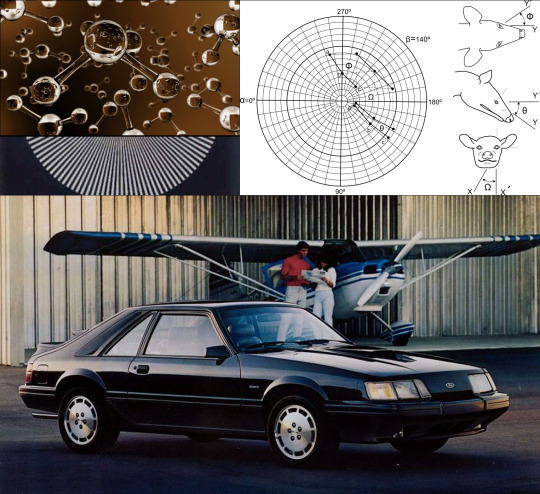
Turns out millions of rats drowned in murky bubbly water eh?
Could it be that one hundred pêr cent of the energy in a fuel could be used instead of about thirty per cent? Computers that make no waste heat? I don't make waste heat much me and I can compute ITY.
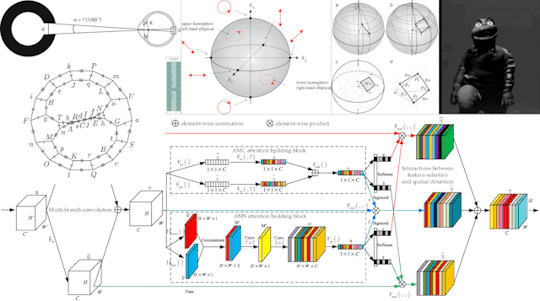
From what can be gathered it looks like the watchdog satellite is now operational.
All the illicit stuff to be revealed in full, configuration and disposition
youtube

This camouflage stuff worked somewhat. On floating balloons them square placards are reflective surfaces that can vibrate.
Why is the Don on the news daily but his trials not televised? Does the Donald take blond hormones? Do you feel the Minilla Madness?
Everyone has some kind of fatberg inside.

When you act to deliberate, be sorry for it ahead. Hard to be more lame than to be just sorry when caught. Intelligence, whatever, it has to assert only one thing: Its place. What one is trying to avoid is not hate towards, it's rancor. Some of the guys that hated me the most became my best buddies at work.
Not trying to hurt, trying to disillusionize.



The tierce does not want to count the damage they do. They bring no real value to any equation.
There need to be a justification for a secret. Having the right to is not a justification, it's an excuse. The social media rats can parasite you and corrupt your progeny because it's not forbidden, freedom.
The All knows needs to understand why 'they' cannot get along in the first place. Be Realistic, Radio Shack.



Le virilbrequin.
https://onlinelibrary.wiley.com/doi/full/10.1002/adma.201905966

'Ouahaha... Might like it.'
youtube
I can't process through beans like I used to. It does contains a lot of energy, pork n beans.
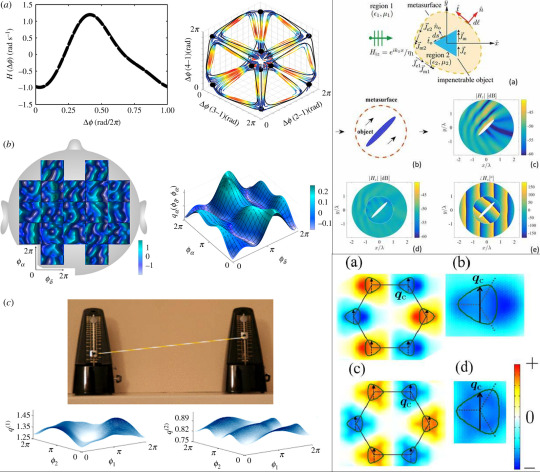
Why nurture parasites as if not? Because parasites they have right over? Because, prout?
Parasites they splatter on your viewscreen as you go, chumps. Try to get rid of this fucking laced American oranged rat. Stuck there this parasite, tabarnaks; one needs a buffer.
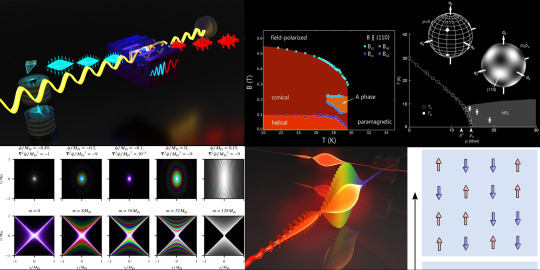
Someone was dumb enough in the past to have really went for this scrambling your minds crap. Either or, it can be cleared in full or it's parasite.








'... Hello Vile Souls...'
youtube


7 notes
·
View notes
Text

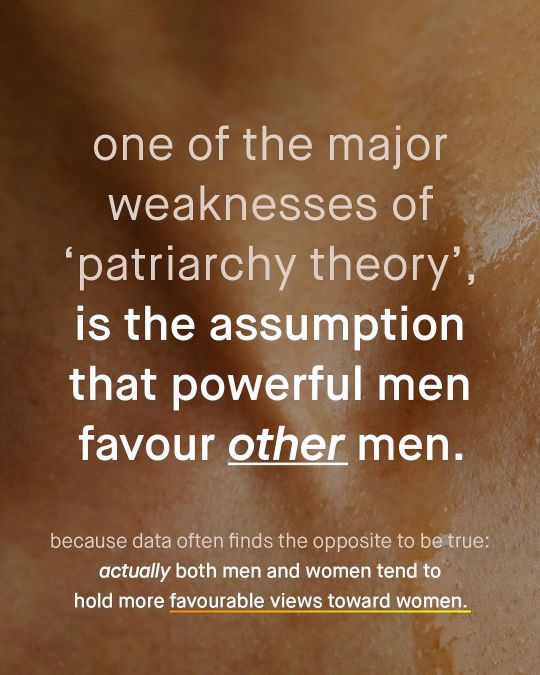
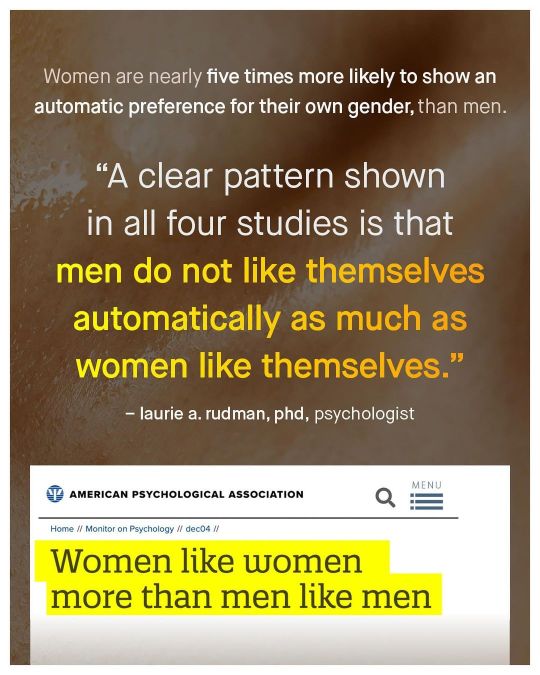

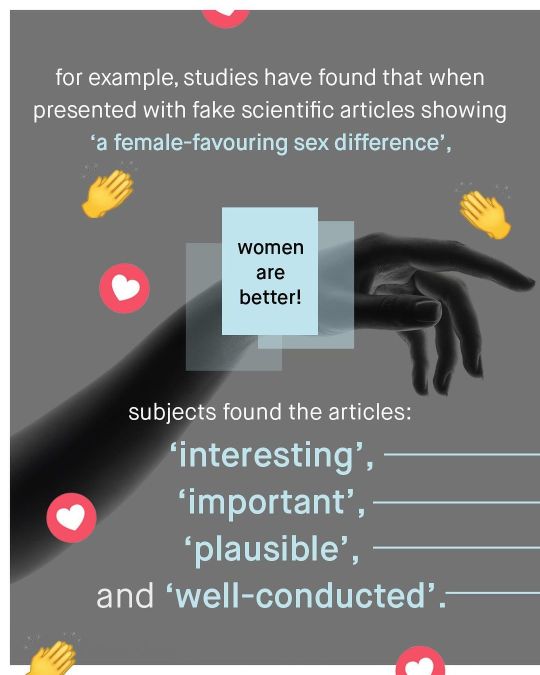





The political opinions of so many are predicated on the base level belief that ‘the world hates women’.
It is from this limited understanding, that our current conception of ‘structural sexism’ is born.
The belief that those in positions of power, who are men, are actively uplifting other men like them, whilst trampling upon women and girls.
And it makes sense at face value.
‘The Patriarchy’ is how many will describe this belief - the world dislikes women - and heaps an extra portion or two of privilege onto the plate of its favourite child: ‘man’.
The problem with this theory is that it often lies in stark contrast to what actual research tells us – the typical finding that both women and men actually hold more favourable views of women.
‘Women like women, more than men like men’ as the APA puts it (and nearly five times more at that).
But there is yet another hidden layer beneath this too… that men also like women, more than they like men.
And with that, ‘patriarchy theory’ takes a direct blow to the very core of its credibility.
Because actually, most people prefer women over men, rather than the other way around.
This phenomenon is well established and studied, and observed across generations, and in dozens of countries around the world.
It’s called the ‘Women Are Wonderful Effect’, and it describes how, in general, people associate more good things with women, and more bad things with men.
So is it time we question the notion of ‘a world that dislikes women’, and honestly asked ourselves, does the world like men any better?
What do you think?
-
Sources
Study one: https://www.stevestewartwilliams.com/p/why-people-react-less-positively
Study two: https://bpspsychub.onlinelibrary.wiley.com/doi/10.1111/bjop.12463
Study three: https://www.apa.org/monitor/dec04/women
==
See also:
Abstract
Little is known about implicit evaluations of complex, multiply categorizable social targets. Across five studies (N = 5,204), we investigated implicit evaluations of targets varying in race, gender, social class, and age. Overall, the largest and most consistent evaluative bias was pro-women/anti-men bias, followed by smaller but nonetheless consistent pro-upper-class/anti-lower-class biases. By contrast, we observed less consistent effects of targets' race, no effects of targets' age, and no consistent interactions between target-level categories. An integrative data analysis highlighted a number of moderating factors, but a stable pro-women/anti-men and pro-upper-class/anti-lower-class bias across demographic groups. Overall, these results suggest that implicit biases compound across multiple categories asymmetrically, with a dominant category (here, gender) largely driving evaluations, and ancillary categories (here, social class and race) exerting relatively smaller additional effects. We discuss potential implications of this work for understanding how implicit biases operate in real-world social settings. (PsycInfo Database Record (c) 2022 APA, all rights reserved).
-
Xians reveal too much about themselves when they say that without their god's rules, there would be endless murdering, rape, theft, etc. It's what they would do.
"Patriarchy" theory proponents do the same thing. They assume that men are as biased towards men as they are to women. It's what they would do.
All it really does is confesses to us their own bias, and that their claims aren't based on evidence. Which we already know.
#The Tin Men#women are wonderful#women are wonderful effect#bias#implicit bias#patriarchy theory#patriarchy#religion is a mental illness
4 notes
·
View notes
Text


Suborbital flight experiments test dust particle agglomerates to study planet formation
Planets are formed when dust and rock in a disk around a young star collide and combine to form ever larger bodies. This so-called accretion is not yet fully understood. Astrophysicists at the University of Duisburg-Essen were able to make significant observations of collision speed and electrical charge of the particles through experiments on a suborbital flight. Their results have just been published in Nature Astronomy.
It takes millions of years for a micrometer-sized dust grain to become a planet with a diameter of 10,000 kilometers. It all begins in a disk-shaped cloud of gas (99%) and dust (1%)—the protoplanetary disk. Here, dust particles collide and form agglomerates. Clouds of these agglomerates eventually collapse into larger bodies, called planetesimals, which can already have a diameter of 1 to 100 kilometers. Through gravity, the planetesimals attract further matter, grow into protoplanets and later into full-fledged planets.
During the processes in the disk, the particles override a collision barrier. "Actually, dust grains larger than about 1 millimeter cannot grow at all because they either bounce off each other or break apart," explain astrophysicists Prof. Dr. Gerhard Wurm and PD Dr. Jens Teiser. "But because they keep colliding, they become charged differently and then attract each other."
The team had already observed adhesion due to electrostatic charge in previous drop tower experiments. Because only about nine seconds of measurement time in microgravity were possible there, they were unable to examine the final size and stability of the growing bodies.
The experiments in the current study were conducted quite differently: They took place during the suborbital flight of a sounding rocket of the European Space Agency (ESA). "While the rocket climbed to and returned from an altitude of 270 kilometers, it offered us six minutes of microgravity to control and monitor our experiments from the ground," says Teiser.
The UDE team was thus able to directly observe the growth of compact agglomerates of about 3 centimeters in size and to measure exactly the maximum speed at which individual particles may collide without destroying anything.
"The agglomerates are so stable that they can withstand the bombardment of individual particles at up to 0.5 meters per second. Anything faster erodes them," emphasizes astrophysicist Wurm. "In addition, we have carried out numerical simulations that show that the collisions do indeed result in a strong electrostatic charge and attraction."
"We were surprised to find such specific speeds for erosion," adds Teiser. "Especially since they are close to the values used in previous simulations for fragmentation, i.e., the breaking up of particles or objects." This means that the physical conditions are similar to those under which material in the disk-shaped cloud around a young star is eroded or broken up.
The results of the UDE team are incorporated into physical models of protoplanetary disks and particle growth and thus help to understand the details of planet formation.
TOP IMAGE: Charged particles have formed an agglomerate. Credit: AG Wurm
LOWER IMAGE: Bypassing the bouncing barrier. In protoplanetary disks, dust particles can grow up to a millimeter by hit-and-stick. Bouncing prevails at this size. Decimeter-sized particles could further evolve into planetesimals. This leaves a size gap. The stability of tribocharged clusters can overcome this size gap in planetesimal formation. Credit: Nature Astronomy (2025). DOI: 10.1038/s41550-024-02470-x. https://www.nature.com/articles/s41550-024-02470-x
3 notes
·
View notes
Text
Comprehensive Guide to Foreign Direct Investment (FDI) in Vietnam
In-depth analysis of Foreign Direct Investment (FDI) in Vietnam. Explore historical context, benefits, key sectors, legal framework, challenges, trends, and practical guidance for successful investment.
I. Introduction: The Strategic Importance of Foreign Direct Investment (FDI) in Vietnam
Vietnam’s ascent as a leading Southeast Asian economy is inextricably linked to the success and scale of Foreign Direct Investment (FDI) in Vietnam. For decades, a steady influx of international capital, technology, and expertise has been a primary catalyst for the nation’s remarkable development. This investment fuels critical infrastructure projects, powers a globally competitive manufacturing sector, drives export growth, and generates millions of essential jobs. For global businesses seeking expansion, market access, or production efficiency, understanding the dynamics, opportunities, and regulatory environment surrounding Foreign Direct Investment (FDI) in Vietnam is paramount.
This guide thoroughly examines FDI in Vietnam, designed for investors, advisors, and policymakers. We will define FDI within the Vietnamese context, trace its historical evolution, analyze its significant economic impact, and explore the key factors driving its attractiveness. We will also identify the major sectors receiving Foreign Direct Investment (FDI) in Vietnam, discuss the practical benefits and challenges investors encounter, detail the governing legal framework, review current trends, and offer actionable guidance for successful implementation. Engaging effectively with Foreign Direct Investment (FDI) in Vietnam requires an informed strategy, and this guide aims to provide that crucial foundation.
II. Defining Foreign Direct Investment (FDI) in Vietnam: Beyond Capital Injection

1. Core Definition of FDI
Foreign Direct Investment (FDI) involves an investment by an entity from one country to acquire a lasting interest and a significant degree of management influence in an enterprise operating in another country, such as Vietnam. This distinguishes FDI in Vietnam from passive portfolio investments. Typically, acquiring 10% or more voting power signifies an FDI relationship. Common forms include establishing 100% foreign-owned enterprises (WFOEs), joint ventures (JVs) with local partners, or conducting mergers and acquisitions (M&A).
2. The Broader Impact of Foreign Direct Investment (FDI) in Vietnam
While crucial, capital is only part of the story. FDI in Vietnam acts as a vital channel for transferring intangible assets:
Technology & Know-How: Introducing advanced production methods, machinery, and operational expertise.
Skills Development: Upskilling the local workforce through training and exposure to international standards.
Market Access: Integrating Vietnamese operations into global value chains and export networks.
Enhanced Competition: Stimulating innovation and efficiency among domestic firms. Recognizing these broader impacts is key to appreciating the transformative role of Foreign Direct Investment (FDI) in Vietnam.
III. The Historical Evolution of Foreign Direct Investment (FDI) in Vietnam
The pathway of FDI in Vietnam reflects the country’s economic opening and global integration journey.
1. Post-Doi Moi Beginnings: Initial Foreign Direct Investment (FDI) in Vietnam
The Doi Moi reforms initiated in 1986 marked the start, with the first Law on Foreign Investment following in 1987. Early FDI in Vietnam (late 80s/early 90s) was modest, focusing on resource extraction and basic manufacturing (textiles, footwear), often via JVs, amidst a developing regulatory and infrastructural environment.
2. WTO Accession and the FDI Surge in Vietnam
Vietnam’s accession to the World Trade Organization (WTO) in 2007 was a watershed moment. It mandated significant legal reforms, increased transparency, and opened more sectors, boosting investor confidence. The subsequent years saw a dramatic increase in registered and disbursed Foreign Direct Investment (FDI) in Vietnam, fundamentally reshaping the economy.
3. Sectoral Maturation of Foreign Direct Investment (FDI) in Vietnam
While manufacturing remains dominant, FDI in Vietnam has progressively diversified. Significant investment now flows into higher-value areas like electronics assembly, automotive components, real estate development (industrial, commercial, residential), modern retail, technology services (software, FinTech, e-commerce), and, increasingly, renewable energy. This shift highlights Vietnam’s success in leveraging FDI for industrial upgrading.
IV. The Vital Significance of Foreign Direct Investment (FDI) for Vietnam’s Economy
The contribution of Foreign Direct Investment (FDI) in Vietnam to the nation’s socio-economic progress is immense and undeniable.

1. Driving GDP Growth through Foreign Direct Investment (FDI) in Vietnam
The FDI sector is a primary engine of Vietnam’s high GDP growth rates. FIEs significantly contribute to industrial output and overall economic activity, stimulating both direct and indirect investment.
2. Job Creation via Foreign Direct Investment (FDI) in Vietnam
FIEs have created millions of direct jobs across skill levels and spurred significant indirect employment in supplier and service industries, playing a crucial role in income generation and poverty reduction.
3. Technology Transfer and Capacity Building from FDI in Vietnam
FDI in Vietnam is a key channel for acquiring modern technology, operational know-how, and quality management systems, enhancing the productivity and competitiveness of local industries through spillover effects.
4. Infrastructure Development Linked to Foreign Direct Investment (FDI) in Vietnam
Large FDI projects often necessitate or directly fund infrastructure improvements (ports, roads, power), particularly within IPs and EZs, creating benefits for the wider economy by improving connectivity and reducing logistics costs.
5. Boosting Exports and Forex Earnings: The Role of Foreign Direct Investment (FDI) in Vietnam
FIEs dominate Vietnam’s export landscape (often >70% of total exports), generating substantial foreign exchange earnings vital for macroeconomic stability, currency support, and financing imports.
6. Enhancing Management and Human Capital through FDI in Vietnam
FDI in Vietnam introduces modern management practices, corporate governance standards, and invests heavily in workforce training, significantly upskilling local labor and management capabilities.
V. Key Factors Attracting Foreign Direct Investment (FDI) to Vietnam
Vietnam’s continued success in attracting Foreign Direct Investment (FDI) in Vietnam rests on several compelling advantages.
See more: How to invest in Vietnam?
1. Economic Growth & Political Stability Supporting FDI in Vietnam
Consistent high GDP growth provides market opportunities, while Vietnam’s stable political system offers predictability and reduces risk for long-term investments – a crucial combination for attracting FDI in Vietnam.
2. Strategic Location as a Magnet for Foreign Direct Investment (FDI) in Vietnam
Centrally located in ASEAN, bordering China, and with extensive coastline access to global shipping routes, Vietnam is ideally positioned for regional manufacturing, logistics, and participation in diversifying global supply chains (“China+1”).
3. Competitive Labor Force Driving Foreign Direct Investment (FDI) in Vietnam
A large, young, trainable, and relatively cost-competitive workforce remains a major draw, particularly for manufacturing FDI in Vietnam, although focus is shifting towards skills alongside cost.
4. Government Incentives Encouraging Foreign Direct Investment (FDI) in Vietnam
Vietnam actively uses tax incentives (CIT reductions/holidays), land rental breaks, and import duty exemptions, often targeted at specific sectors (high-tech, renewables) or locations (disadvantaged areas, IPs/EZs), to encourage high-quality FDI in Vietnam. Ongoing administrative reforms also aim to improve the investment climate.
5. Market Access via FTAs: A Boost for Foreign Direct Investment (FDI) in Vietnam
Vietnam’s extensive network of FTAs (including CPTPP, EVFTA, RCEP) provides preferential access to major global markets, making it an attractive export platform for companies undertaking FDI in Vietnam.
VI. Priority Sectors for Foreign Direct Investment (FDI) in Vietnam
The flow of Foreign Direct Investment (FDI) in Vietnam concentrates in several key areas reflecting national priorities and global trends.
1. Manufacturing & Processing: The Traditional Core of FDI in Vietnam
This remains the largest sector, driven by electronics assembly (smartphones, components), textiles/garments/footwear, automotive parts, and furniture. Vietnam is a critical node in global supply chains, attracting continuous manufacturing FDI in Vietnam. Challenges involve upgrading value chains and developing supporting industries.
2. Real Estate: Significant Foreign Direct Investment (FDI) in Vietnam
Rapid urbanization and economic growth fuel demand for industrial parks, logistics facilities, commercial office space, retail malls, residential projects, and hospitality developments, attracting substantial real estate FDI in Vietnam, especially in major cities and coastal regions. Navigating land regulations is key.
3. Renewable Energy: Emerging Opportunities for FDI in Vietnam
Driven by energy demand and sustainability goals (PDP8), solar and wind power (both onshore and offshore) are attracting significant interest and FDI in Vietnam. Grid integration and evolving policy mechanisms (like DPPAs) are critical areas to watch.
4. Technology & Innovation: A Growing Frontier for FDI in Vietnam
Leveraging a young, tech-savvy population and government support, FDI in Vietnam is increasing in software development, IT outsourcing, FinTech, e-commerce, and R&D activities, positioning Vietnam as a potential regional tech hub. IP protection remains a focus area.
5. Retail & Consumer Goods: Tapping Market Growth via FDI in Vietnam
Rising incomes fuel demand, attracting FDI in Vietnam into modern retail formats (supermarkets, convenience stores, e-commerce) and the manufacturing/distribution of international consumer brands targeting the growing domestic market. Understanding local consumer behavior is crucial.
VII. Navigating Challenges in Foreign Direct Investment (FDI) in Vietnam
Potential investors must be prepared for the operational realities and challenges associated with Foreign Direct Investment (FDI) in Vietnam.
1. Administrative Procedures and Bureaucracy Affecting FDI in Vietnam
Despite reforms, processes for obtaining licenses (IRC, ERC, sub-licenses) and permits can be complex, time-consuming, and sometimes lack transparency. Engaging experienced local advisors is highly recommended to navigate the administrative requirements for FDI in Vietnam.
2. Infrastructure Gaps and Logistics Costs Impacting FDI in Vietnam
While improving, logistics infrastructure (ports, roads) can face congestion, leading to higher costs. Power reliability and internet quality can vary by location. Thorough site selection considering infrastructure quality is vital for efficient FDI in Vietnam.
3. Labor Regulations and Compliance: A Key Consideration for FDI in Vietnam
Strict adherence to Vietnam’s comprehensive Labor Code (contracts, wages, overtime, social insurance, safety, termination) is essential but complex. Ensuring compliance, managing labor relations, and obtaining work permits for expatriates requires careful HR management and legal counsel for FDI in Vietnam.
4. Market Competition and Dynamics for Foreign Direct Investment (FDI) in Vietnam
Vietnam’s markets are increasingly competitive. Succeeding requires thorough market research, effective localization strategies, competitive pricing, strong branding, and potentially strategic local partnerships to navigate competition from both domestic and other foreign players involved in FDI in Vietnam.
5. Adapting to the Evolving Legal Framework for FDI in Vietnam
Laws and regulations governing FDI in Vietnam are frequently updated. Investors must proactively monitor changes related to investment, tax, labor, environment, data privacy, etc., and adapt their compliance strategies accordingly, typically with support from local legal experts.
VIII. Understanding Vietnam’s Legal and Policy Framework for Foreign Direct Investment (FDI)
A clear understanding of the legal foundations governing Foreign Direct Investment (FDI) in Vietnam is non-negotiable.
1. Key Legislation Governing Foreign Direct Investment (FDI) in Vietnam
Law on Investment (2020): The primary statute defining investment forms, market access conditions (negative lists), procedures (IRC), incentives, and investor rights/obligations for FDI in Vietnam.
Law on Enterprises (2020): Governs company establishment (ERC), corporate governance, and operations for all enterprise forms, including FIEs resulting from FDI in Vietnam.
Supporting Decrees/Circulars: Essential for detailed implementation guidance (e.g., Decree 31/2021/NĐ-CP for the Investment Law).
2. Investment Incentives Supporting Foreign Direct Investment (FDI) in Vietnam
Vietnam offers CIT and land rental incentives based on sector (high-tech, green tech, R&D), location (disadvantaged areas, IPs/EZs/HTPs), or project scale, aiming to attract high-quality FDI in Vietnam. Proper application during registration is needed to secure these benefits.
3. Special Zones (IPs, EZs, HTPs) for Foreign Direct Investment (FDI) in Vietnam
These designated zones offer ready infrastructure, streamlined administration (“one-stop-shop”), and often the highest levels of incentives, making them preferred locations for many manufacturing and tech-focused FDI in Vietnam projects.
4. Establishment Procedures for Foreign Direct Investment (FDI) in Vietnam
The typical two-stage process involves obtaining an Investment Registration Certificate (IRC) from the relevant licensing authority (DPI or Zone Management Board) followed by an Enterprise Registration Certificate (ERC) from the provincial Business Registration Office. Professional assistance is highly recommended to navigate the documentation and approvals for FDI in Vietnam.
5. Repatriation of Profits and Capital from FDI in Vietnam
Vietnamese law guarantees the right to remit profits, dividends, and other legal income abroad after fulfilling tax obligations and complying with SBV foreign exchange regulations, typically processed through authorized banks using the DICA account and supporting documentation. This provides essential assurance for Foreign Direct Investment (FDI) in Vietnam.
IX. Current Trends and Statistics for Foreign Direct Investment (FDI) in Vietnam
Monitoring recent developments provides context for Foreign Direct Investment (FDI) in Vietnam.
1. Recent Inflows and Resilience of FDI in Vietnam
Despite global challenges, both registered and disbursed FDI in Vietnam have shown resilience, indicating sustained investor confidence. M&A activity is gaining prominence alongside traditional greenfield projects.
2. Leading Investor Countries for Foreign Direct Investment (FDI) in Vietnam
Major Asian economies like South Korea, Japan, Singapore, Taiwan, Hong Kong, and China consistently top the list. US and EU investment is also significant and growing, particularly in higher-value sectors.
2. Sectoral and Regional Distribution Trends in FDI in Vietnam
Manufacturing remains dominant, but FDI in Vietnam is increasingly flowing into real estate (especially industrial), renewable energy, and technology/ICT. Geographically, investment concentrates in established southern and northern industrial hubs, though efforts exist to promote investment in other regions.
3. Impact of Global Events on Foreign Direct Investment (FDI) in Vietnam
Supply chain diversification (“China+1”), global digital transformation, and the green energy transition are major tailwinds driving specific types of FDI in Vietnam. Geopolitical stability relative to some other regions also enhances its appeal.
X. Practical Guidance for Implementing Foreign Direct Investment (FDI) in Vietnam
Successful execution of Foreign Direct Investment (FDI) in Vietnam requires careful strategic steps.
1. Choosing the Appropriate Investment Form for FDI in Vietnam
Select WFOE, JV, BCC, or M&A based on control needs, sector regulations, market access goals, and risk assessment. Each form has distinct implications for governance, liability, and operational flexibility for Foreign Direct Investment (FDI) in Vietnam. Legal advice is crucial.

2. Navigating the Registration Steps for Foreign Direct Investment (FDI) in Vietnam
Follow the IRC and ERC application processes diligently. Prepare thorough documentation, anticipate potential queries from authorities, and consider using experienced service providers to manage the administrative burden associated with establishing FDI in Vietnam.
3. The Importance of Due Diligence for Foreign Direct Investment (FDI) in Vietnam
Conduct comprehensive legal, financial, operational, and market due diligence, especially before entering JVs or undertaking M&A. This critical step identifies risks and informs valuation for Foreign Direct Investment (FDI) in Vietnam.
4. Leveraging Local Partnerships for Foreign Direct Investment (FDI) in Vietnam
If pursuing a JV, select partners carefully based on reputation, expertise, and strategic alignment. Clearly define roles, responsibilities, and governance in robust legal agreements to ensure a successful partnership for your Foreign Direct Investment (FDI) in Vietnam.
XI. Conclusion: The Continuing Promise of Foreign Direct Investment (FDI) in Vietnam
Foreign Direct Investment (FDI) in Vietnam continues to be a cornerstone of the country’s economic dynamism and offers compelling opportunities for international businesses. Vietnam’s blend of stable growth, strategic location, competitive advantages, proactive government policies, and expanding market access through FTAs creates a fertile ground for investment. While navigating administrative complexities, infrastructure limitations, and an evolving legal landscape requires diligence and local expertise, the overall trajectory remains highly positive.
The government’s focus on attracting higher-quality, sustainable, and technologically advanced FDI in Vietnam aligns well with global trends and investor priorities. By understanding the specific market nuances, strategically addressing challenges, and committing to compliant and ethical operations, foreign investors can successfully leverage the significant potential offered by Foreign Direct Investment (FDI) in Vietnam. Engaging with this vibrant economy offers not just financial returns but also the chance to participate in one of Asia’s most exciting growth stories, making Foreign Direct Investment (FDI) in Vietnam a strategic consideration for global businesses looking towards the future.
See more: Vietnam Market Entry Strategy
1 note
·
View note
Photo

Understanding the basics of international trade and its consequences is crucial in today’s interconnected world. In recent weeks, the term Trump tariffs, coined after President Donald Trump, has dominated headlines, sparking global debates and economic consequences. Whether you’ve been wondering what tariffs are or trying to decipher the impact of the tariffs Trump implemented, we will give you a clear breakdown of the topic—and how these policies might just tip the global economy into recession. In this beginner-friendly guide, we’ll explore what tariffs are, why governments use them, and how Trump tariffs have shifted the global economic landscape. We’ll also analyze whether these measures are protecting American jobs or putting the entire global economy at risk. If you’ve ever asked yourself, “What are tariffs?”—or more importantly, “How are Trump’s tariffs affecting me?”—read on. What Are Tariffs? Steep tariffs were announced on major economies as well as on US allies. | Photo: Carlos Barria/Reuters Tariffs are essentially taxes imposed by a government on imported goods and services. Think of them as an extra cost added to foreign products entering the country. This tax is typically calculated as a percentage of the product’s value. For example, if a tariff rate is 25% and a product costs $100, the importer pays an additional $25 in tariffs. Governments impose tariffs for several reasons: Revenue Generation: Tariffs serve as a source of income for governments. Protection of Domestic Industries: By making imported goods more expensive, tariffs encourage consumers to buy local alternatives. Correcting Trade Imbalances: Tariffs can reduce reliance on imports and boost local production. Political Leverage: Tariffs can be used as a bargaining tool in international negotiations. This last point is especially important when we look at Trump’s tariffs. Current U.S. President Donald Trump introduced sweeping tariffs on countries like China, Canada, and Mexico, not just to address trade deficits, but also to pressure these countries into political concessions, including cooperation on immigration and drug control. How Do Tariffs Affect the Economy That Impose Them? At first glance, tariffs may seem beneficial to the imposing country. Domestic industries can flourish with reduced competition, potentially leading to increased production and job creation. But this surface-level benefit is often short-lived. Many domestic industries rely on imported materials to create their products. When tariffs raise the price of those materials, it increases production costs. Businesses then face a choice: absorb the costs and reduce profits, or pass them onto consumers, causing prices to rise. This leads to inflation, reduced consumer spending, and eventually, a slowdown in economic activity. In the case of the tariffs President Trump introduced, U.S. manufacturers were hit hard. Companies that import parts or raw materials saw their costs spike. If those companies passed the cost to consumers, spending habits will shift, leading to layoffs and decreased business activity. Economist Claudia Sahm warns that the U.S. would struggle to avoid a recession if these Trump tariffs continue to stay in place. What Happens to the Countries Facing Tariffs? For the countries on the receiving end, the impact of tariffs can be devastating. When the U.S. imposes tariffs, foreign products become more expensive in American markets. This means lower demand for exports, reduced market share, and potential job losses in export-dependent industries. Take Canada, for example—exports make up 33% of its GDP, with 20% going to the U.S. A tariff from its largest trading partner significantly dents its economic performance. Countries like Vietnam, Cambodia, and Bangladesh—each hit with Trump tariffs as high as 49%—are facing declining orders from U.S. buyers and shrinking manufacturing output. To mitigate losses, some nations redirect their exports to other countries. But doing so isn’t easy. It takes time, money, and effort to establish new trade relationships, navigate regulations, and build infrastructure. In the meantime, economic pain persists. Are Trump’s Tariffs Triggering a Global Recession? Economists are increasingly sounding the alarm that the Trump tariffs may do more harm than good, not just to the U.S., but globally. J.P. Morgan recently raised its estimate of the global recession risk from 40% to 60%. Why? Tariffs disrupt global supply chains and decrease demand worldwide. Most products today are built using components from several countries. When demand drops in one part of the world, the ripple effect is felt across the globe—from manufacturing hubs in Asia to service providers in the U.S. Kristina Fong from the ISEAS-Yusof Ishak Institute explains that when American importers face higher costs, they either absorb the loss or pass it on to consumers. In both cases, companies may resort to downsizing, and consumers may reduce spending. This dual blow—lower business investment and lower consumer spending—is a recipe for recession. The Bigger Picture: A Reshaped Global Trade Order? Photo: Reuters Beyond economics, these tariffs are reshaping geopolitical alliances. Countries that once relied heavily on the U.S. are now diversifying their trade relationships, turning to more stable partners like China. According to Jayant Menon, a fellow at ISEAS, these shifts could redefine global power balances in the long run. In short, the tariffs Trump hoped would revive American manufacturing might instead be sparking inflation, disrupting supply chains, damaging alliances, and potentially triggering a global economic downturn akin to the 2008 financial crisis. Whether you’re a student trying to understand what tariffs are, a business owner worried about global trade, or simply someone tracking economic news, one thing is clear: these tariffs are a high-stakes gamble with the global economy. Featured image: Daybreak/Getty Images For the latest in fashion, lifestyle, and culture, follow us on Instagram @StyleRave_ —Read Also !function(f,b,e,v,n,t,s) if(f.fbq)return;n=f.fbq=function()n.callMethod? n.callMethod.apply(n,arguments):n.queue.push(arguments); if(!f._fbq)f._fbq=n;n.push=n;n.loaded=!0;n.version='2.0'; n.queue=[];t=b.createElement(e);t.async=!0; t.src=v;s=b.getElementsByTagName(e)[0]; s.parentNode.insertBefore(t,s)(window, document,'script', ' fbq('init', '496558104568102'); fbq('track', 'PageView'); !function(f,b,e,v,n,t,s)if(f.fbq)return;n=f.fbq=function()n.callMethod? n.callMethod.apply(n,arguments):n.queue.push(arguments);if(!f._fbq)f._fbq=n; n.push=n;n.loaded=!0;n.version='2.0';n.queue=[];t=b.createElement(e);t.async=!0; t.src=v;s=b.getElementsByTagName(e)[0];s.parentNode.insertBefore(t,s)(window, document,'script',' fbq('init', '1453079628754066'); fbq('track', "PageView"); Source link
0 notes